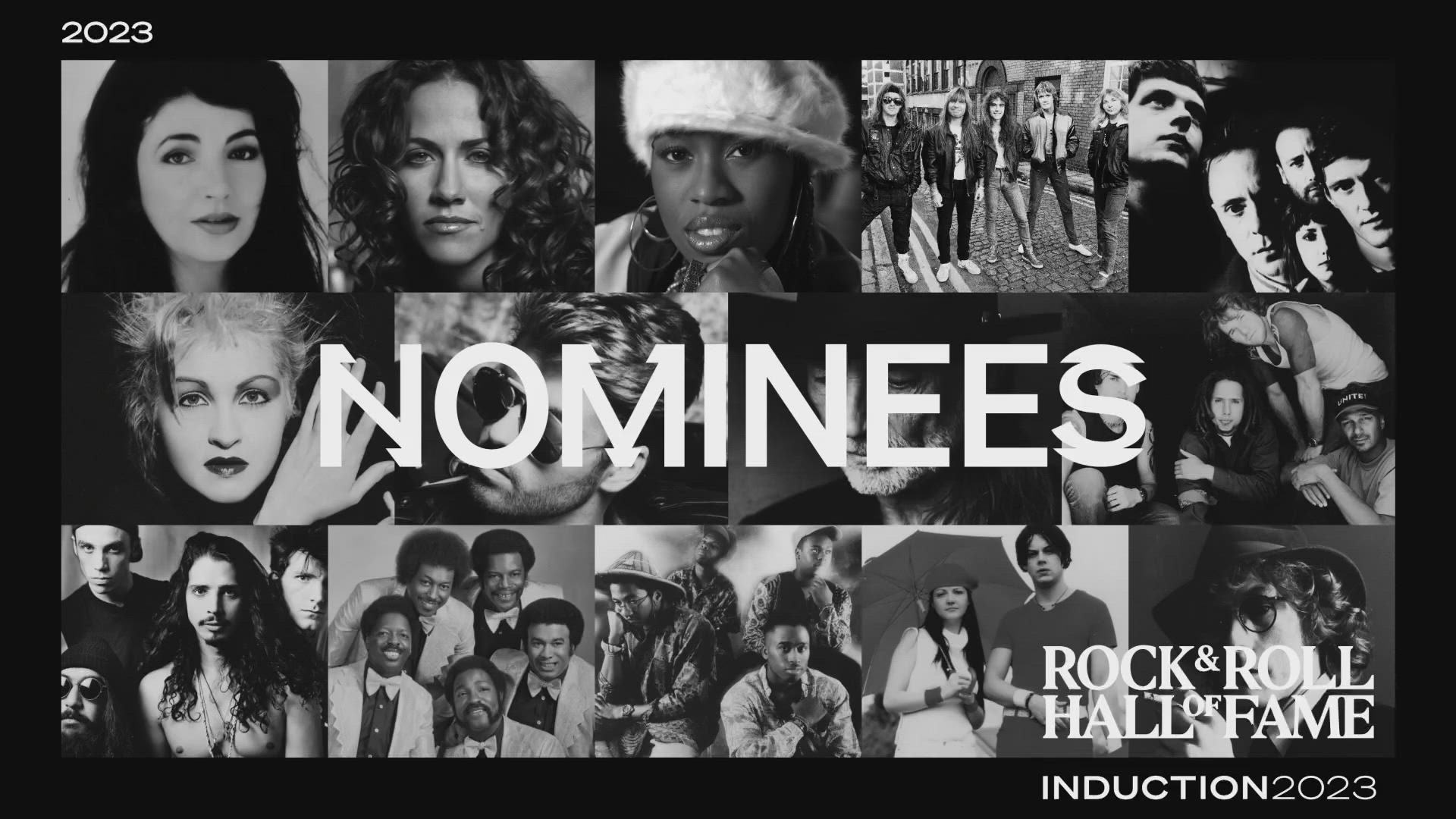Rock and Roll Hall of Fame announces 2023 induction nominees: See who made the list
The list features eight first-time nominees, which include Missy Elliott, Willie Nelson, George Michael, The White Stripes, Sheryl Crow, Cyndi Lauper and more.
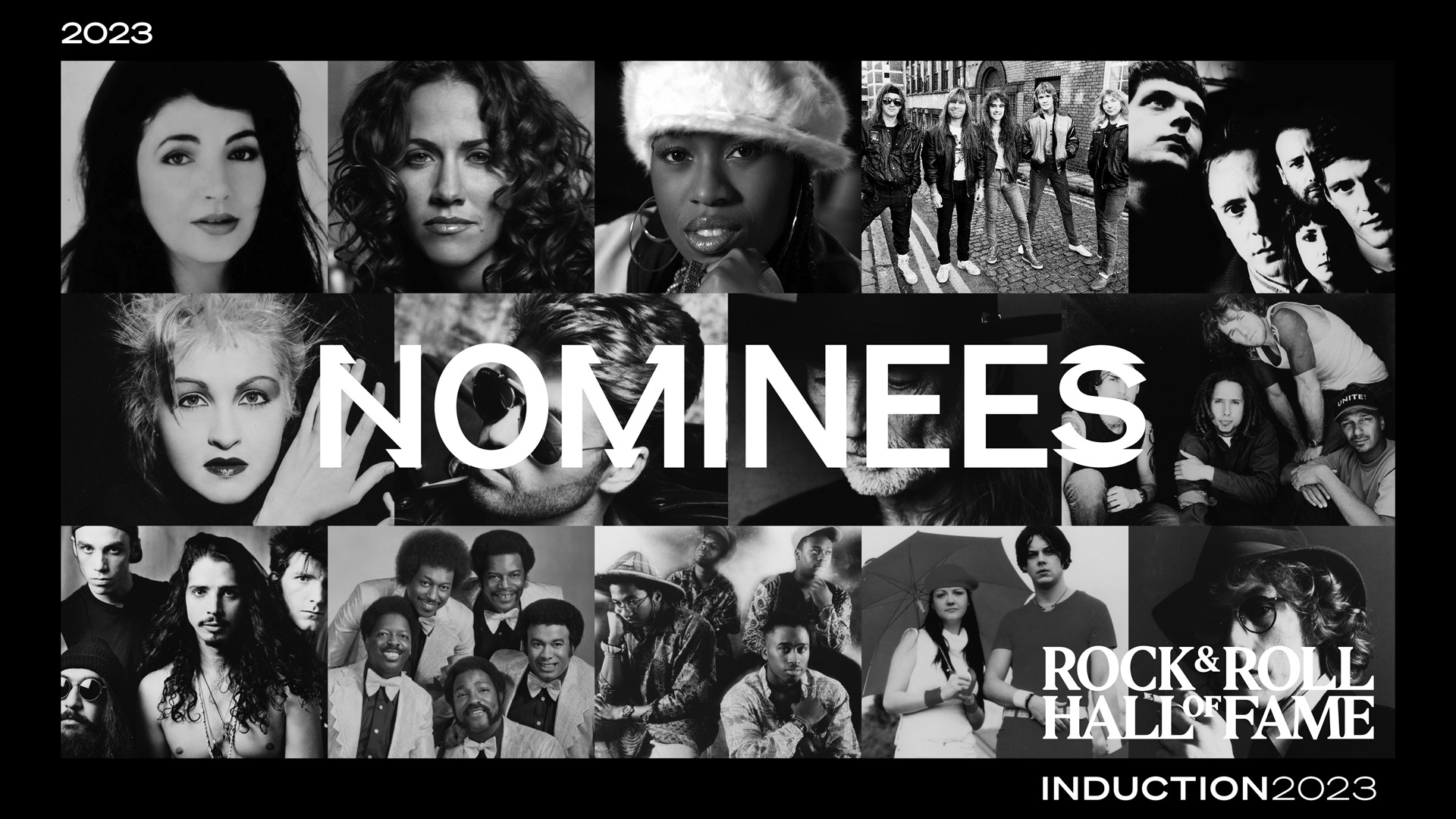
Here. We. Go!
The Rock and Roll Hall of Fame in Cleveland has just announced its list of 2023 induction nominees. So who made the cut this year? Check out the list of 14 nominees below...
2023 INDUCTION NOMINEES
- Kate Bush
- Sheryl Crow (first-time nominee)
- Missy Elliott (first-time nominee, first year eligible)
- Iron Maiden
- Joy Division / New Order (first-time nominee)
- Cyndi Lauper (first-time nominee)
- George Michael (first-time nominee)
- Willie Nelson (first-time nominee)
- Rage Against the Machine
- Soundgarden
- The Spinners
- A Tribe Called Quest
- The White Stripes (first-time nominee, first year eligible)
- Warren Zevon (first-time nominee)
You can read in-depth bios of each nominee and listen to their music throughout the chapters below...
"This remarkable list of nominees reflects the diverse artists and music that the Rock and Roll Hall of Fame honors and celebrates," said John Sykes, Chairman of the Rock and Roll Hall of Fame Foundation. "These artists have created their own sounds that have impacted generations and influenced countless others that have followed in their footsteps."
NOTE: Each of the following bios has been provided by the Rock and Roll Hall of Fame. Some of the music videos included throughout the chapters below may contain offensive language.
Kate Bush Previous nominee

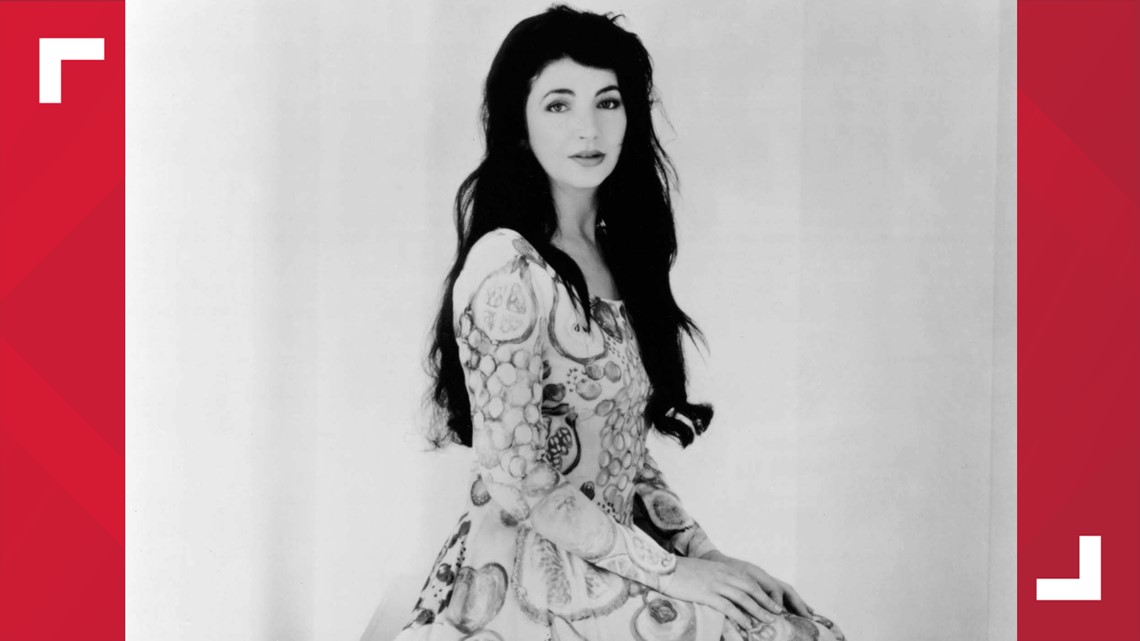
A spellbinding visionary, the singer, songwriter, multi-instrumentalist, and producer Kate Bush created a unique space in rock. She used lush soundscapes, radical experimentation, literary themes, sampling, and theatricality to captivate audiences and inspire countless musicians.
Kate Bush steered the course of her career from its infancy, fighting her record label for control of her eclectic musical aesthetic and maintaining control by establishing a home recording studio and publishing and management companies for her work. The Emily Brönte-inspired debut single “Wuthering Heights” from inaugural album The Kick Inside (co-produced by Pink Floyd’s David Gilmour) made Bush an overnight sensation and the first female artist to reach Number One on the U.K. charts with a self-written song. The album was soon followed by Lionheart and Bush’s only concert tour, which combined music, dance, theater, poetry, mime, burlesque, and magic. Described by the press as an “extraordinary, hydra-headed beast,” the tour was cited by Elton John as “a benchmark for people’s shows in the future.”
Following a 12-year hiatus, Kate Bush released the critically acclaimed double album Aerial (2005), at once multilayered, experimental, and genre-breaking. In 2014, she returned to the stage for a concert residency at London’s Hammersmith Apollo. Tickets sold out in 15 minutes, and the ensuing acclaim drove eight of her albums to chart simultaneously – another first for women in rock. In 2022, the TV show Stranger Things prominently featured Bush’s emotional 1985 song “Running Up That Hill (A Deal With God),” ushering in yet another Kate Bush renaissance and creating a new generation of fans. The song shot to Number One on the U.K. singles chart and into the Top Ten in the U.S., while Spotify streams of the song increased 9,000 percent.
Kate Bush and her entrancing vocals have influenced artists ranging from Johnny Rotten to Tori Amos to Big Boi. Bush threw open doors for female artists to experiment more radically with their music, image, and theatricality, inspiring Björk, Solange, St. Vincent, and numerous others. She is not only a rock superstar, but a legend.
Sheryl Crow First-time nominee


Sheryl Crow’s voice is forever woven into the tapestry of American music. Through her powerhouse solo performances, collaborations with industry icons, and early session musician work, Crow’s influence reverberates through classic 1990s rock, pop, country, folk, blues, and the work of countless singer-songwriters.
Crow got her big break singing backup for Michael Jackson’s Bad world tour in 1987. From there she became a session musician, providing backing vocals for Stevie Wonder, Belinda Carlisle, and Don Henley – while simultaneously writing songs for Celine Dion, Tina Turner, and Wynonna Judd. Signed to A&M as a solo artist, Crow released her 1993 debut album Tuesday Night Music Club – now a revered classic that resulted in three of her nine Grammys, including Best Female Rock Vocal and Record of the Year for “All I Wanna Do.” Crow produced and played several of the instruments on her 1996 self-titled sophomore album, which was another commercial hit and won two additional Grammys. Her success continued into the 2000s with Platinum albums C’mon, C’mon (2002) and Wildflower (2005) and Gold certified Detours (2008).
Throughout her career, Sheryl Crow has collaborated with some of the biggest names in rock and country music – Keith Richards, Prince, Johnny Cash, and Loretta Lynn to name a few – drawing a who’swho of artists to work on her self-identified final album, 2019’s Threads. The supergroup-level collaborations Crow created between veteran and younger artists culminate in an album that encapsulates her spiritual, political, and musical worldviews. Threads includes the socially conscious “Story of Everything” featuring Chuck D, Andra Day, and Gary Clark, Jr., the rootsy “Prove You Wrong” with Stevie Nicks and Maren Morris, and Eric Clapton, Sting, and Brandi Carlile covering George Harrison’s devotional “Beware of Darkness.”
The vast catalog of this soulful rock superstar earns Sheryl Crow the title given to her by country singersongwriter Chris Stapleton: “One of the best that we’ve ever had... and may ever have.”
Missy Elliott First-time nominee, first year eligible

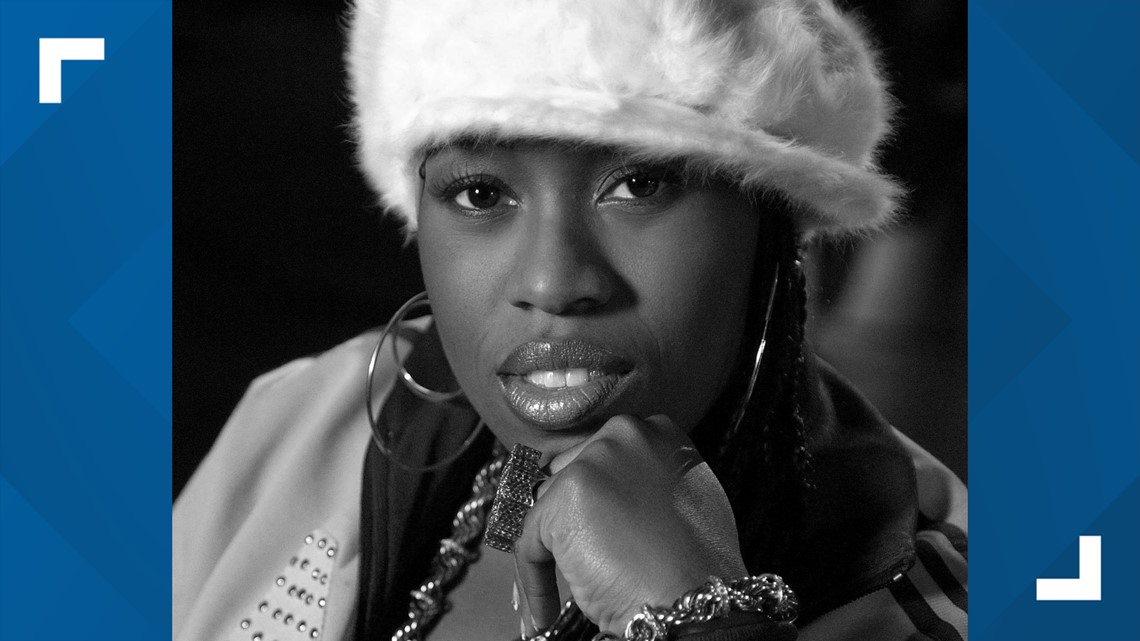
Songwriter, groundbreaking producer, label executive, and video trendsetter, Missy “Misdemeanor” Elliott was crucial to crafting the Virginia Beach sound that took over the airwaves in the late 1990s and 2000s. She established herself as an in-demand songwriter and producer and founded her own record label, all before breaking out as a Platinum-selling solo star. Elliott forged new paths for women in the music industry and society at large through her behind-the-scenes mastery and unapologetic ownership of her body, her sexual desires, and her Blackness in her music.
Missy Elliott’s debut album Supa Dupa Fly (1997) established her sound: futuristic production rife with jarring distortions under her inimitable rap style. She spit out onomatopoetic nonsense, sing-song, and jagged syncopations in a signature urban Southern drawl. On this and subsequent albums like Miss E...So Addictive! (2001) and her self-produced The Cookbook (2005), Elliott took the weird and made it not only accessible, but the most sought-after sound in hip-hop and R&B. Her music video aesthetic proved as deliciously off-kilter as her music with body-morphing visual effects. Elliott sings with a detached head (“One-Minute Man”), sports a retractable head (“Get Ur Freak On”), and exaggerates and celebrates her size with the help of a fisheye lens and a patent-leather inflatable suit (“The Rain”).
A true pathbreaker in a male-dominated genre, Missy Elliott was the first woman rapper (and third hiphop artist) inducted into the Songwriters Hall of Fame and to earn the MTV Video Vanguard Award. Among her other accolades are four Grammys, two honorary doctorates, and the Woman’s Entrepreneurship Day Music Pioneer Award given by the United Nations. She also holds the record for the most Platinum albums by a woman rapper at six. Elliott has produced and/or written songs for a veritable who’s-who of stars, from Aaliyah and Beyoncé to Eminem and Lizzo.
Iron Maiden Previous nominee

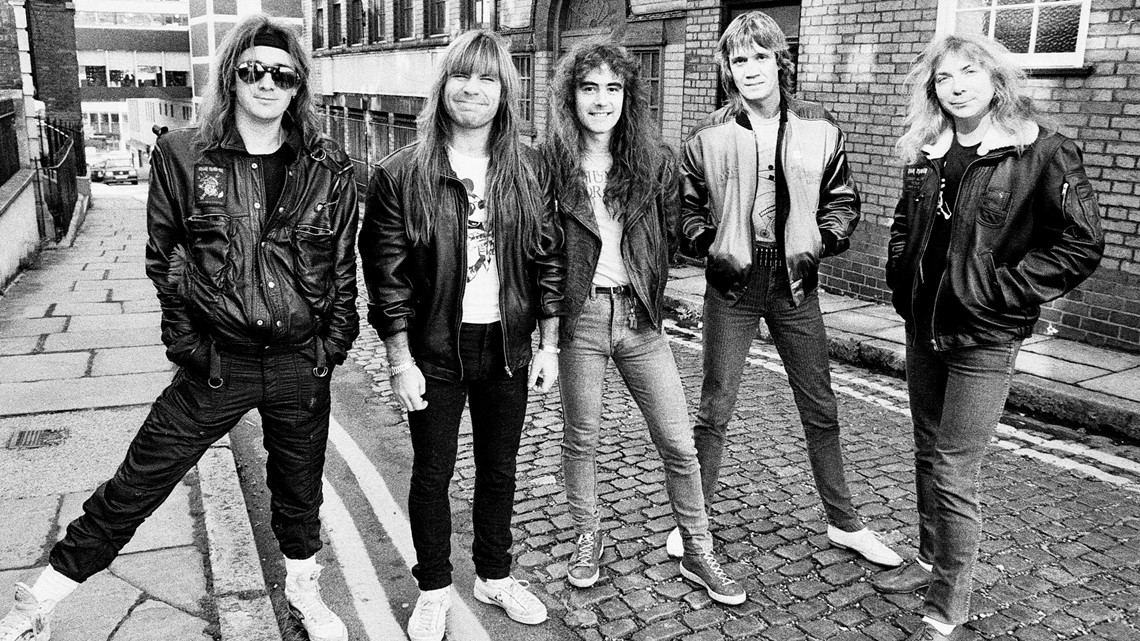
Iron Maiden created the blueprint for how heavy metal bands should look, sound, and tour. Throughout the 1980s, the British group released seven high-octane albums that solidified it as one of rock’s biggest bands. With a blistering assault of guitars, driving rhythm section, and soaring vocals, Iron Maiden can switch gears at a moment’s notice to take audiences on an expressive, atmospheric journey.
Formed in 1975 by bassist Steve Harris, the band’s early lineup shifted numerous times before the release of its self-titled debut in 1980. The album features vocalist Paul Di’Anno growling punkinfluenced blasters like “Iron Maiden” and “Running Free” over stunning guitar and bass lines. The record’s cover art featured Maiden’s iconic stylized logo along with the zombie mascot Eddie, who has appeared on every album cover since. Iron Maiden was the first metal band played on MTV in 1981, which brought it additional success and recognition. In 1982, the lineup of Harris, guitarists Dave Murray and Adrian Smith, drummer Clive Burr, and new vocalist Bruce Dickinson recorded The Number of the Beast, widely considered one of the best metal albums of all time. Courtesy of Dickinson, its title track features perhaps the greatest blood-curdling scream in rock history. While the album caused controversy and cries of “Satanism!” from religious groups, it captivated a massive fanbase and brought the band to a new level of stardom that has only grown over time.
With the addition of drummer Nicko McBrain in 1982, Maiden’s classic lineup was finalized, and the band’s next four studio albums – Piece of Mind (1983), Powerslave (1984), Somewhere in Time (1986), and Seventh Son of a Seventh Son (1988) – continued expanding the musical boundaries of heavy metal. Lauded as a foundation of the new wave of British heavy metal, Iron Maiden has never stopped making groundbreaking music (with over 100 million albums sold), selling out stadiums and arenas (with over 2,000 shows played around the world), and influencing generations of musicians, including Metallica, Dream Theater, and Coheed and Cambria.
Joy Division / New Order First-time nominee


Joy Division and New Order: two bands that share a single story. It is the remarkable tale of innovative musicians who created something revolutionary and massively influential, not once, but twice. They were gothic-rock pioneers who became electronic dance-floor innovators and a beacon for thousands of bands that followed.
After attending a now-legendary Sex Pistols show at Manchester’s Free Trade Hall in 1976, Bernard Sumner, Peter Hook, Ian Curtis, and Stephen Morris started Joy Division. The band melded the raw sounds of punk with literary themes of love, loss, pleasure, and pain. Journalist Jon Savage once described Curtis’ lyrics as “the underlying reality of a society in turmoil.” Curtis’ deep vocals on these lines, braced by cutting guitars mixed with melodic bass lines and echoing drum sounds, transformed the emotional into the physical. Days before they were to begin a U.S. tour, Curtis tragically passed (May 18, 1980), turning the dark themes of their music into stark reality.
The band carried on, renaming themselves New Order and adding keyboardist Gillian Gilbert. Newly inspired by Kraftwerk and Giorgio Moroder, the group fully adopted the use of synthesizers and pulsing dance floor beats, creating a new synth-pop sound with the song “Blue Monday” (1983) – the bestselling EP single of all time. The band’s identity extended to all aspects of its presentation, including artwork (Peter Saville), music videos (Jonathan Demme), unique album design (Factory Records), and partial ownership of the Haçienda nightclub in Manchester. During the 1980s, New Order became a mainstream cultural phenomenon for teenagers, appearing on soundtracks for films (Pretty in Pink) and on MTV (“True Faith”).
New Order has continued to innovate musically into the twenty-first century while embracing its own history and remaining uniquely itself. The band has been covered, remixed, and recognized as an influence by artists such as U2, The Cure, Björk, Nine Inch Nails, The Killers, and Chvrches. It created the goth-rock lifestyle, and then transcended the gloom to become a worldwide innovator of electronic dance music.
Cyndi Lauper First-time nominee

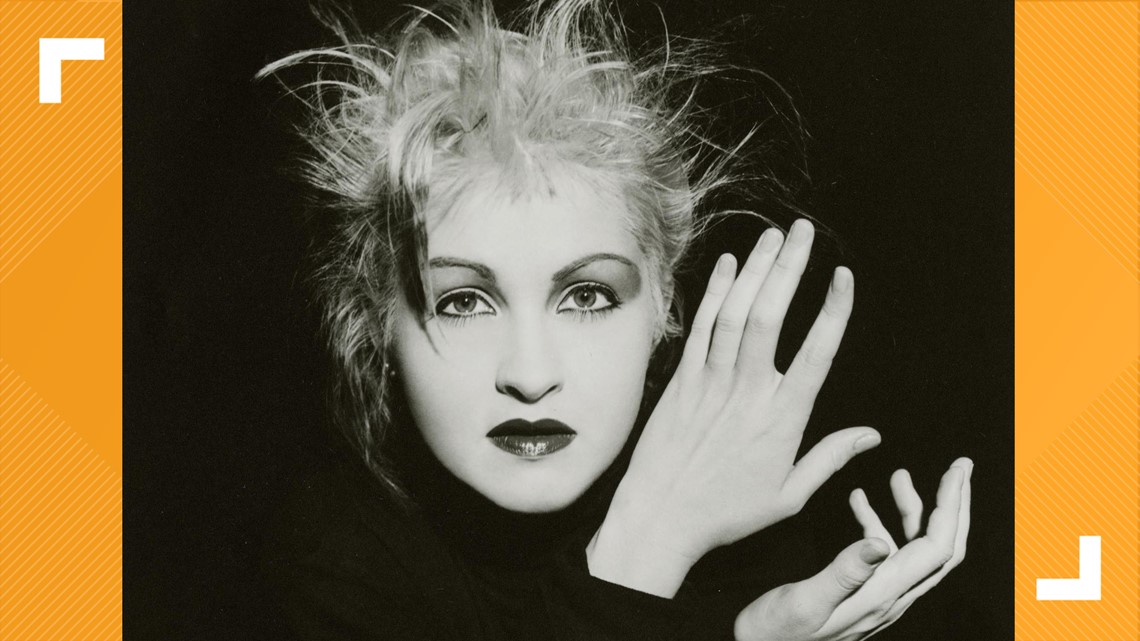
She’s So Unusual. Never have three words so completely captured the essence of an artist. Cyndi Lauper is truly iconic, from her distinctive four-octave voice and eclectic mix of pop, rock, reggae, funk, and dance styles to her multicolored hair and eclectic wardrobe. Lauper broke down barriers for waves of future artists and empowered them to perform as their unique, authentic selves.
A record for women musicians at the time, Cyndi Lauper’s debut album She’s So Unusual (1983) included four consecutive Top Five U.S. singles – “Girls Just Want to Have Fun,” “Time After Time,” “She Bop,” and “All Through the Night” – and earned her two Grammys. Dua Lipa, awarding Lauper with the 2018 Billboard Icon Award, called She’s So Unusual, “a multiplatinum declaration of independence and an important statement about the right of women to define themselves and their place in the world on their own terms.” Lauper’s cowrite “Time After Time” has been covered by over 100 artists and is featured in Rolling Stone’s 500 Best Songs of All Time.
By the end of 1985, Cyndi Lauper had established herself as one of the best-selling artists in the world, and over the next 15 years she grew as a writer, producer, and advocate. Lauper’s 1986 sophomore album True Colors reached Number Four on the Billboard 100 and included the commercially successful singles “True Colors” and “Change of Heart.” Lauper’s four albums from the 2000s explored and celebrated such musical genres as pop standards, electronic/dance music, blues, and country. A lifelong advocate for the LGBTQIA+ community, she founded True Colors United in 2008 to support LGBTQIA+ youth experiencing homelessness. In 2013 she became the first solo woman to win a Tony award for Best Score for the queer-positive Broadway hit Kinky Boots.
Cyndi Lauper’s rebellious influence on the attitudes, sound, and fashion of the music industry for the past 40 years is evident in the work of other iconoclastic artists like Alanis Morissette, P!nk, Lady Gaga, and Nicki Minaj.
George Michael First-time nominee

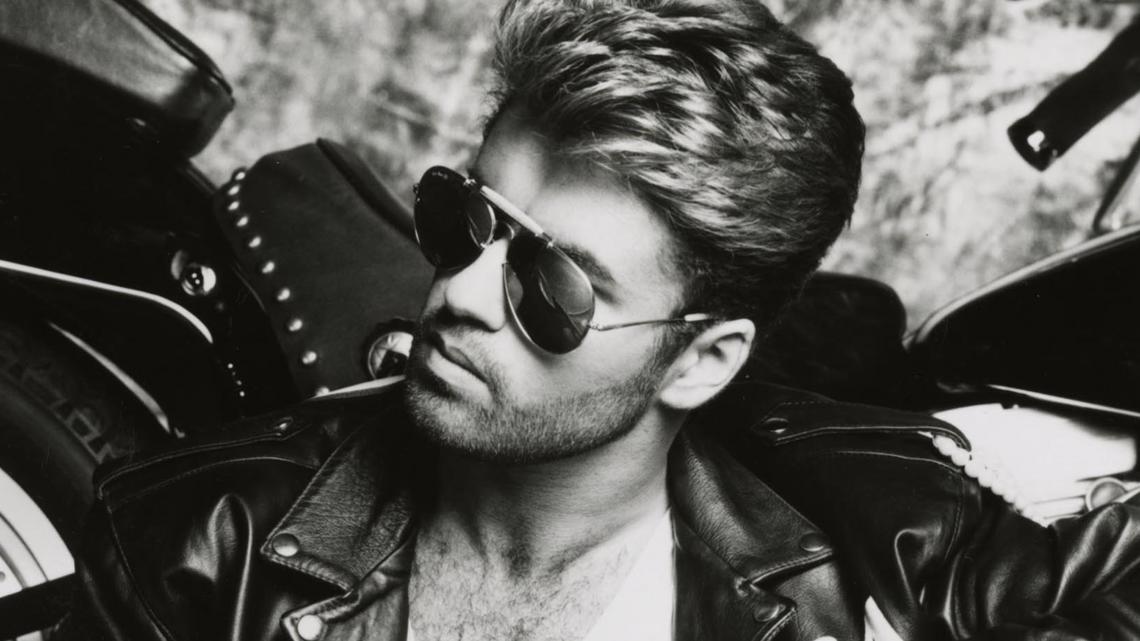
George Michael possessed extraordinary talent as a songwriter, vocalist, and producer. His incomparable vision and drive propelled him to superstardom, and he became the most-played artist on British radio from 1984 to 2004 and one of the best-selling artists of all time.
George Michael formed the pop duo Wham! with schoolmate Andrew Ridgeley in 1981. They achieved teen idol status with hits like “Wake Me Up Before You Go-Go” and the timeless holiday megahit “Last Christmas.” Michael’s first foray into the solo spotlight with the introspective hits “Careless Whisper” and “A Different Corner” eventually spelled the end of the group in 1986.
After the global pop success of Wham!, in 1987, George Michael scored the hit duet “I Knew You Were Waiting for Me” with Aretha Franklin and released his self-produced solo debut, Faith. With well-crafted hooks, mature lyrics, and funk and Motown influences, Faith was a Number One smash boasting four hit singles, including the title track and “Father Figure.” It was the first album by a white solo artist to lead Billboard’s Top Black Albums chart and remains one of the best-selling LPs of all time. Echoes can be heard in the impassioned vocals and personal lyrics of artists from Adele to Lady Gaga to Mary J. Blige.
Wanting his music to speak for itself, George Michael declined to appear on the album cover and in music videos for Listen Without Prejudice Vol. 1. The album is a masterpiece that alludes to Michael's struggle as a closeted gay man during the height of the AIDS epidemic. However, after coming out in 1998, Michael refused to shy away from honesty again, paving the way for a generation of proud LGBTQIA+ artists, from Sam Smith to Lil Nas X to Troye Sivan.
George Michael died in 2016, leaving a remarkable legacy as a brilliant performer, activist, philanthropist, and champion for artist authenticity.
Willie Nelson First-time nominee

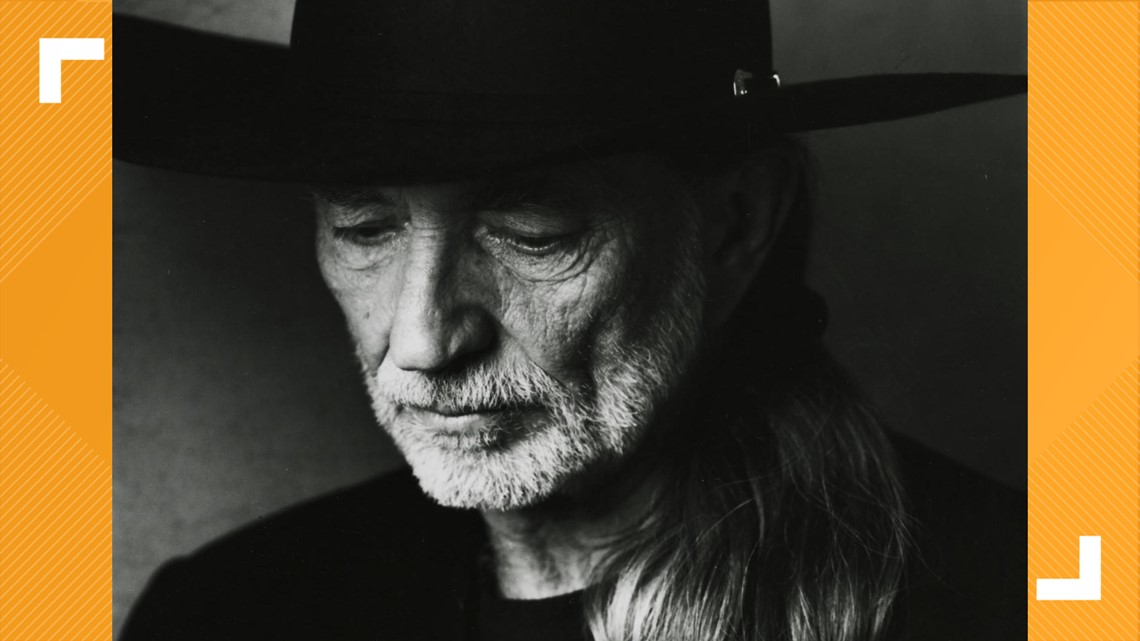
With over 60 years in the music business, Willie Nelson (b. 1933) – songwriter, performer, antiestablishment outlaw, political activist, and philanthropist – is an American institution. Nelson may call country music his home, but he has always pushed stylistic boundaries – mixing in rock & roll, jazz, pop, and blues.
Nelson’s first success came writing hits for country’s biggest stars, including Patsy Cline (“Crazy”) and Ray Price (“Night Life”), and songs that have become standards (“Funny How Time Slips Away”). In 1962, Nelson released the first of a staggering 73 solo studio albums. But he chafed at working within Nashville’s confines, and in 1972 he returned home to Texas to make music on his own terms. Connecting with Austin’s counterculture, Nelson recorded for Atlantic, combining country with rock and blues. Songs like the autobiographical “Me and Paul” (1971) groove and swing with blues licks, while pedal steel and piano soar in the foreground. Nelson and co-conspirators Waylon Jennings, Jessi Colter, and Tompall Glaser ushered in the Outlaw Country movement, with their Wanted! The Outlaws becoming the first country album to go Platinum.
By 1975, Nelson was a superstar. His concept album Red Headed Stranger (1975) delivered his first Number One hit, “Blue Eyes Crying in the Rain.” In true outlaw fashion, Nelson released a gospel album, Troublemaker (1976), and an album of pop standards (produced by Booker T), Stardust (1978); both went to Number One. While continuing to create a songwriter’s dream catalog, Nelson also formed supergroup the Highwaymen with Jennings, Johnny Cash, and Kris Kristofferson. He has collaborated with artists as diverse as Ray Charles, Julio Iglesias, Paul Simon, Bob Dylan, Sheryl Crow, Wynton Marsalis, and Snoop Dogg.
Willie Nelson’s work has influenced generations of musicians, from Neil Young to John Mellencamp to Kacey Musgraves, and his personal actions have supported the welfare of millions of Americans. In 1985, Nelson cofounded Farm Aid to assist family farmers. He is co-chair of NORML, which supports marijuana legalization, and he advocates for numerous causes including animal welfare and LGBTQIA+ rights.
Rage Against the Machine Previous nominee

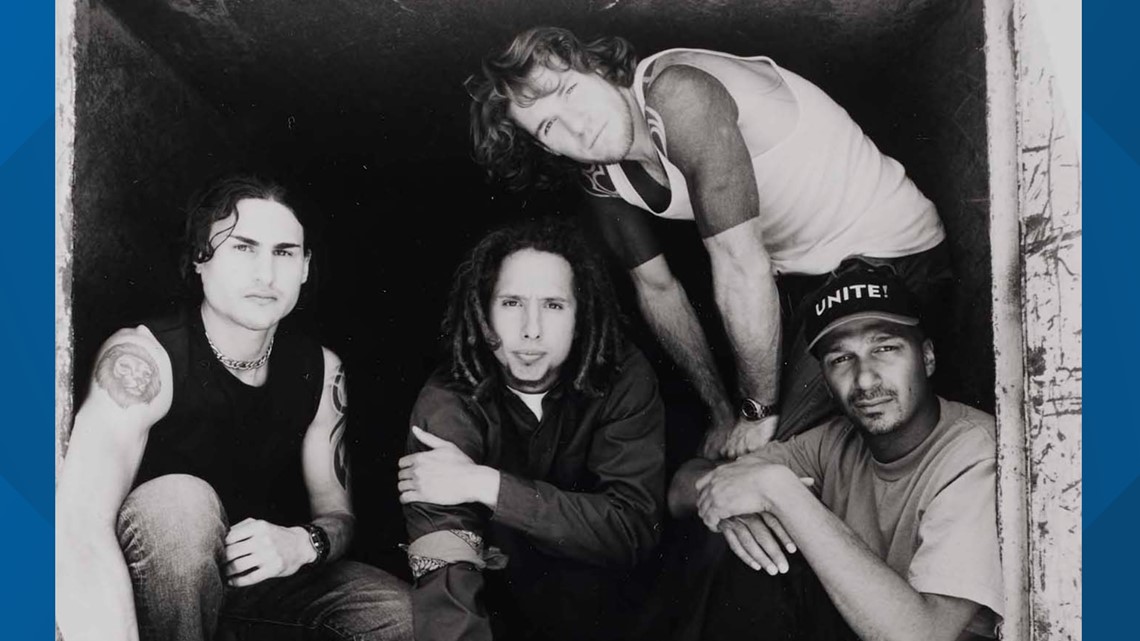
The greatest rock & roll is the voice of change, and Rage Against the Machine shook the foundations of the status quo – lyrically, sonically, and philosophically. The band mixed hip-hop, punk, metal, funk, and rock in an entirely new way. They took aim at oppressive systems of power – cultural, political, and economic – and set a new standard for how to ignite a revolution through the power of music.
Formed in 1991, the Los Angeles quartet’s self-titled 1992 debut and 1996’s Evil Empire ushered raprock into the mainstream and established Rage Against the Machine as a powerful force that harnessed strength from defying sonic boundaries. Zack de la Rocha’s stinging, hip-hop-inspired vocals drew on his days fronting a hardcore band. The rhythm section of bassist Tim Commerford and drummer Brad Wilk heightened the urgency of de la Rocha’s delivery with deep, heavy grooves grounded by a pummeling backbeat – no rhythm section could maximize volume while staying in the pocket more skillfully. Guitarist Tom Morello took the rap-rock hybridization further than contemporary groups. He used pedals, toggle switches, and alternative tunings to incorporate effects normally created by hip-hop turntables, samplers, and synthesizers into the language of heavy metal through Rage’s driving riffs and iconic solos.
Rage Against the Machine were part of a musical tradition indebted to the MC5, the Clash, and Public Enemy. While plenty of 1990s rock bands supported social justice issues, Rage Against the Machine’s rebellious politics stood head and shoulders above. Onstage and off, the band members gave a voice to the powerless, calling out local and global inequalities and railing against censorship, corporate cronyism, and government overreach. Their lyrics were smart and pointed; “Freedom” highlighted the plight of Leonard Peltier, an imprisoned Native American leader, while “People of the Sun” showed solidarity with tyrannized Mexican citizens. Even today, their lyrics remain relevant. “Killing in the Name,” a stark indictment of racism and police brutality, still resonates deeply in cities across America. Rage Against the Machine forged brazen protest music for the modern world.
Soundgarden Previous nominee

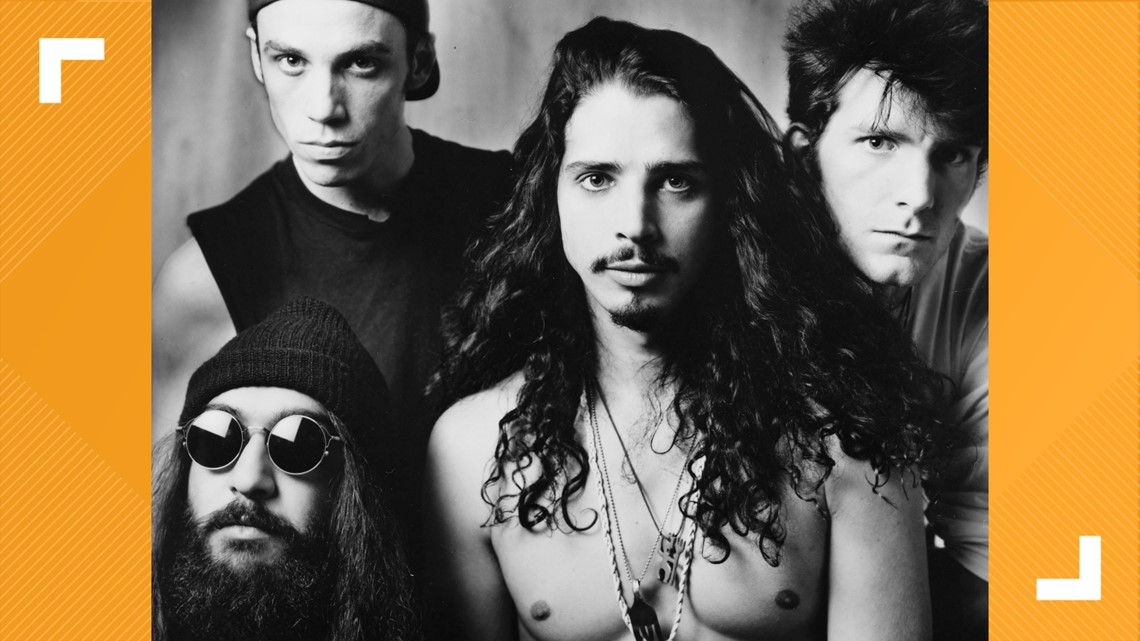
Soundgarden ignited the grunge movement that radically changed rock & roll. The band’s raw power came out of the Northwest and flew in the face of a synthetic, disconnected world to give countless fans what they had long desired: a voice and a sense of belonging.
In 1984, bassist Hiro Yamamoto formed Soundgarden with his high school friend, guitarist Kim Thayil, and his roommate, singer/drummer Chris Cornell. In 1986, the band appeared on the legendary Deep Six compilation with six Seattle grunge pioneers, and Matt Cameron joined the ranks of Soundgarden on drums.
This lineup recorded seminal grunge works, including its debut EP Screaming Life, the second studio release of the foundational indie record label Sub Pop. With Louder Than Love in 1989, Soundgarden became the first band from that scene to release an album on a major label. The following year, Ben Shepherd stepped in on bass, and the band ascended into the mainstream with Badmotorfinger (1991), the six-time Platinum Superunknown (1994), and Down on the Upside (1996). Soundgarden disbanded in 1997, later reuniting in 2010. Tragically, Soundgarden came to an end in 2017 with the passing of Chris Cornell.
A unique combination of alternative, metal, and punk – with noise and progressive experimentalism sprinkled in – Soundgarden’s compelling sound earned it a lauded place in music history. Cameron’s ability to balance groove with power in odd time signatures is unrivaled. Shepherd’s bass fills whatever role is needed: melodic counterpoint to Cornell’s vocals, rumbling foundation to Thayil, or rhythmic complement to Cameron. Thayil’s combination of metal-influenced drop tuning, virtuosity, and noise allow his riffs and solos to soar. Above it all, Chris Cornell’s four-octave voice effortlessly moves between hauntingly ethereal, gut-wrenchingly powerful, and seductively inviting.
Soundgarden’s foray into the mainstream paved the way for Nirvana, Pearl Jam, and other grunge bands, setting the stage for major labels to seek out alternative sounds as diverse as Britpop, industrial, and riot grrrl.
The Spinners Previous nominee

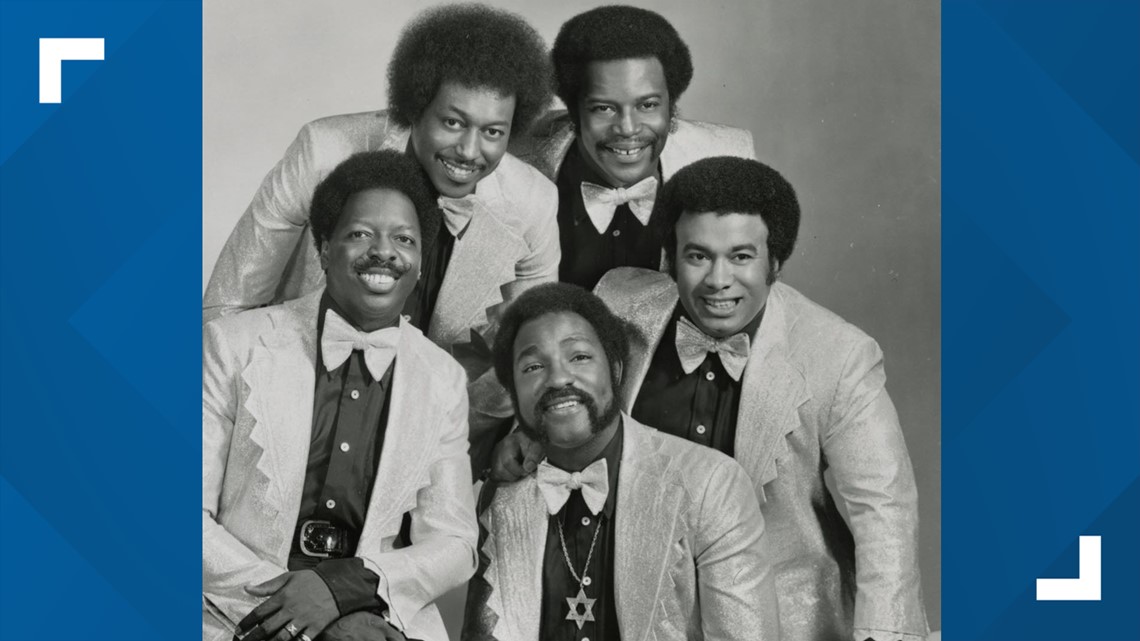
The Spinners remain one of the most beloved R&B vocal groups in the world, celebrated by fans and fellow artists alike. Initially a Motown band with Detroit origins, the Spinners’ lush, soulful harmonies and magnetic stage presence would come to define Philadelphia soul. They achieved massive crossover success, with their songs filling the airwaves and connecting with listeners around the world.
Before settling into the classic five-man lineup of Henry Fambrough, Billy Henderson, Pervis Jackson, Bobbie Smith, and Philippé Wynne, the Spinners spent nearly two decades in their native Detroit. Starting out on Harvey Fuqua’s Tri-Phi label, the Spinners released their debut single “That’s What Girls Are Made For” in 1961. By 1964 the group had moved on to Motown’s V.I.P. imprint, where “I’ll Always Love You” became their first charting R&B single on the label, peaking at Number Eight. The group also had a Top Five R&B single with 1970’s “It’s a Shame,” cowritten and produced by Stevie Wonder.
Two years later, at the behest of Aretha Franklin, the Spinners moved to Atlantic, where they teamed up with Philadelphia producer-songwriter Thom Bell, a perfect choice given his prior work with the Delfonics and the Stylistics. The group became a hitmaking machine with four Number One R&B hits in less than 18 months: “I’ll Be Around,” “Could It Be I’m Falling in Love,” “One of a Kind (Love Affair),” and “Mighty Love - Pt. 1.” The Spinners released 12 consecutive Top Ten R&B singles over their first five years at Atlantic. The disco era brought massive crossover hits with “They Just Can’t Stop It (The Games People Play),” “The Rubberband Man,” and with Dionne Warwick “Then Came You,” Number One on the Billboard Hot 100.
In the following decades, the Spinners released eight more albums, including 2021’s ‘Round the Block and Back Again, gaining countless new fans on every continent drawn to the eternal joys of classic R&B. Icons such as Elton John, David Bowie, and Elvis Costello have sung their praises.
A Tribe Called Quest Previous nominee

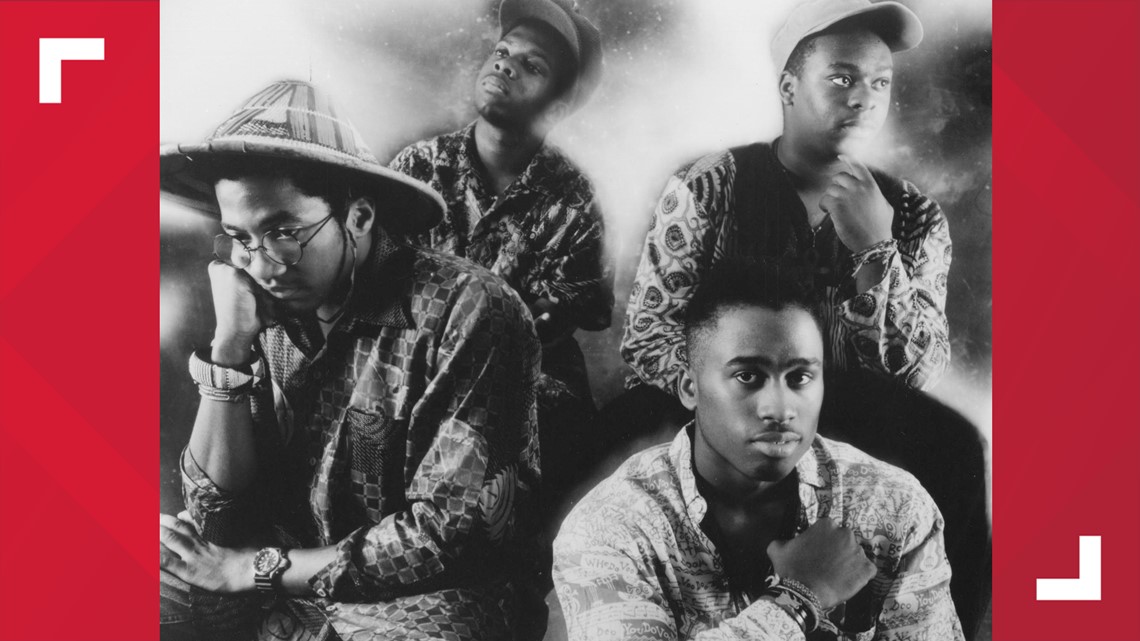
A Tribe Called Quest forever shifted the hip-hop landscape and expanded the creative possibilities for the genre. Their freedom of expression, ingenuity, and minimalist brilliance continue to inspire generations of hip-hop artists and fans.
One of the most artistic, eclectic, and perceptive rap groups of the 1990s, A Tribe Called Quest nurtured a new alternative hip-hop sub-genre with a caste-free cross-pollination of hip-hop, jazz, and alternative rock. The pioneering group abandoned the aggressive machismo of the era, delving deeply into the jazzrap revolution. Eschewing the hard-hitting sounds of James Brown prevalent among many of their hiphop contemporaries, A Tribe Called Quest instead based their music around more laid-back samples, confronting social issues in the African American community with abstract philosophy. Their cerebral approach became a metaphor for the ideological conviction that the intermingling of cultures and sound can yield beauty and understanding.
Formed in high school in Queens, New York, in 1985, A Tribe Called Quest featured Q-Tip serving as the producer-leader, Phife Dawg as the emcee, Jarobi White as the spirited everyman, and Ali Shaheed Muhammad as the DJ and coproducer. Within four years, the group released three albums, now recognized as among the best of all time: People’s Instinctive Travels and the Paths of Rhythm, The Low End Theory, and Midnight Marauders. “It was listening to N.W.A’s Straight Outta Compton that inspired us to make The Low End Theory,” said Q-Tip. “Years later, I spoke to Dr. Dre, and he told me that hearing The Low End Theory inspired him to make The Chronic.”
The group became the nucleus of a New York collective known as the Native Tongues, a musical movement deeply rooted in Afrocentric ideals. They created underground waves that continue to ripple throughout hip-hop, influencing artists from the 1990s to the present. Pharrell Williams has said: “We’re all [Q-Tip’s] sons. Myself, J Dilla, Kanye – we wouldn’t be here if it wasn’t for Tribe albums.”
The White Stripes First-time nominee, first year eligible

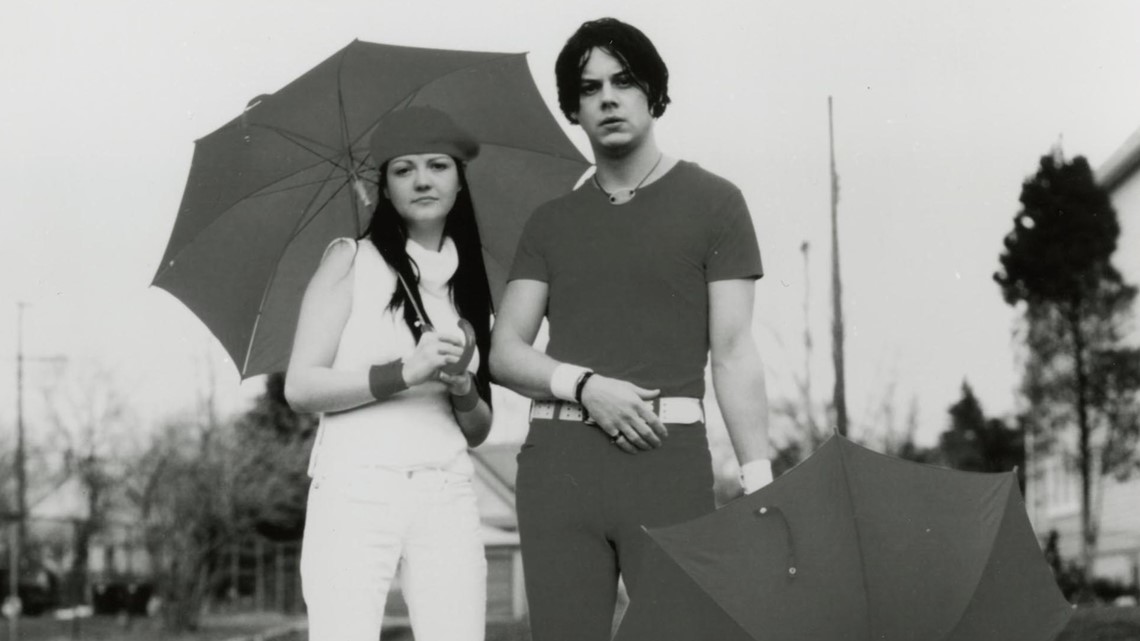
The White Stripes reimagined minimalist garage and punk rock for a new generation and brought blues into the twenty-first century. They stripped down rock to its essentials and delivered the uninhibited freedom that only the best music can offer.
Guitarist Jack White (born John Gillis) and drummer Meg White formed the White Stripes in Detroit in 1997. After releasing three blues-inspired albums on the independent label Sympathy for the Record Industry, the duo broke into the mainstream with a 2002 major label re-release of White Blood Cells. They promptly followed up that album with their first proper major label debut Elephant (2003). After two more albums – the piano-driven Get Behind Me Satan (2005) and their highest-charting Icky Thump (2007) – the band embarked on a Canadian tour, as featured in the acclaimed documentary Under Great White Northern Lights. In 2007, Meg bravely revealed her struggles with acute anxiety that led to a tour cancelation. The White Stripes performed for the last time on the final episode of Late Night With Conan O’Brien before officially dissolving in 2011.
Red, white, and black saturate the White Stripes’ visual aesthetic. With the help of director Michel Gondry, their innovative music videos experiment with shifts in perspective (“The Denial Twist”) and the deconstruction of basic elements (“Fell in Love With a Girl”). Their musical style layers the rawness of garage rock and the piercing energy of punk over a blues foundation. Songs like “Seven Nation Army” feature a trio of sounds – often vocals, guitar, and drums. Jack’s voice whines and screeches out unapologetic lyrics laced with raw production effects. His heavy guitar riffs ground the harmonic structure while his tasteful solo work fleshes out the overall texture. Meg maximizes the cymbals’ power to accent rather than to keep steady time, giving her minimalist beats a signature swagger.
Jack White told Rolling Stone magazine, “The whole point of the White Stripes is the liberation of limiting yourself,” and a new generation is listening – from rock duos Royal Blood and Deap Vally to bassist Karina Rykman to rapper Danny Brown.
Warren Zevon First-time nominee

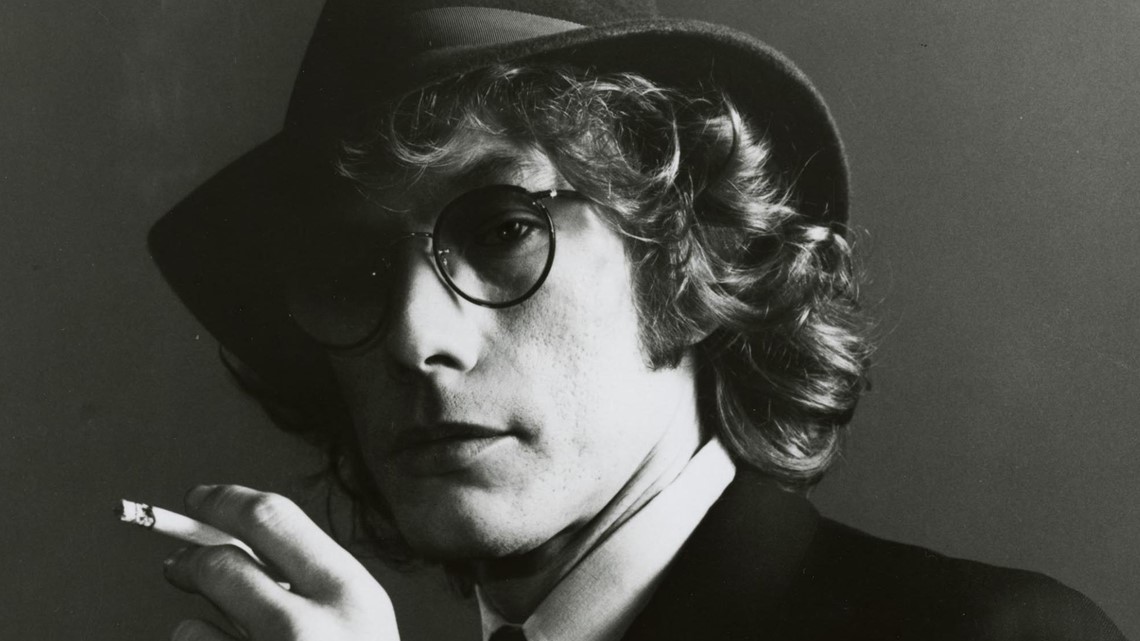
Warren Zevon was an artist’s artist. One of the most talented and significant singer-songwriters to emerge in the 1970s, Zevon wrote poetic but offbeat songs, often with darkly humorous and acerbic lyrics, and delivered them with a dry wit and a twisted energy like no other performer could. Throughout his career, Zevon built a devoted fan base and earned the respect of his greatest peers, including Bob Dylan, Bruce Springsteen, and Neil Young.
Trained as a classical pianist, Zevon began his career in the 1960s as a composer of commercial jingles, a writer of pop songs (including two recorded by the Turtles), and a singer in the folk-pop duo Lyme & Cybelle, followed by several years doing session work and touring with musicians including the Everly Brothers. Zevon’s self-titled album, released in 1976 and produced by his friend Jackson Browne, won glowing reviews from critics and admiration from artists including Linda Ronstadt, who covered four of its songs. The followup album Excitable Boy (1978) featured the smash hit “Werewolves of London,” which climbed the singles charts and earned Zevon a cult following that remained for his entire career.
After releasing more than a dozen critically acclaimed albums, Zevon was diagnosed with an inoperable form of lung cancer in 2002. He spent the final months of his life completing his last album The Wind (2003), which featured contributions from numerous friends and admirers including Browne, Springsteen, Emmylou Harris, Don Henley, and Tom Petty. Zevon died two weeks after the release of the album, which earned two Grammy Awards.
While he never achieved the level of fame and recognition he deserved, Zevon was adored by music critics, revered by his contemporaries, and deeply loved by his fans. “He was and remains one of my favorite songwriters,” said David Crosby. “He saw things with a jaundiced eye that still got the humanity of things.” Zevon’s musical legacy lives on in the work of rock and country troubadours Jason Isbell, Amanda Shires, Taylor Goldsmith, and many others.
How inductees are chosen The Rock Hall induction process
To be eligible for nomination, an individual artist or band must have released its first commercial recording at least 25 years prior to the year of nomination.
“Nominee ballots are sent to an international voting body of more than 1,000 artists, historian, and members of the music industry,” Rock Hall officials explain. “Factors such as an artist’s musical influence on other artists, length and depth of career and the body of work, innovation and superiority in style and technique are taken into consideration.”
Your vote Help pick this year's inductees
Here’s your chance to help influence the final list of inductees. The Rock and Roll Hall of Fame has opened its fan vote once again. You can cast a ballot daily HERE or at the museum itself in Cleveland. The five artists with the most votes will comprise a “fan ballot” that will be tallied with the other ballots when the 2023 inductees are selected. Voting ends on April 28.
Induction location Will the ceremony return to Cleveland in 2023?
So will the Rock Hall induction ceremony be back in Cleveland for 2023? That question remains a mystery for now...
"When I took over this position almost three years ago the first question I had was, why doesn't the hall have a presence in Los Angeles when half of the music industry and most of the artists are based there?" Sykes told Forbes in a 2022 interview. "And I think there just was perception that this was a New York based foundation. And one of the first things I did was to change that and from now on we're going to rotate the induction ceremonies between Cleveland, New York and Los Angeles."
The three-city rotation comes after the Rock Hall previously announced plans in 2016 that inductions would only be held between Cleveland and New York.
Sykes also hinted at the possibility of expanding future Rock and Roll Hall of Fame induction ceremonies to other destinations.
"And hopefully one day other cities like London and Nashville," Sykes told Forbes. "My point of view was it's time to change that. The Rock Hall of Fame should live where the artists and the music industry is and those are those cities. And for me, Los Angeles will now will be a regular stop for the hall."
The 2022 ceremony was held in Los Angeles, while Cleveland last hosted the event in October of 2021.
Editor's note: Video in the player above was originally published in a previous Rock Hall story on June 1, 2022.


